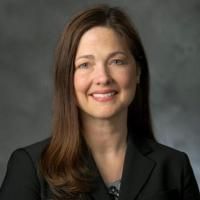Patient-derived micro-organospheres enable clinical precision oncology.
Date
2022-06
Journal Title
Journal ISSN
Volume Title
Repository Usage Stats
views
downloads
Citation Stats
Abstract
Patient-derived xenografts (PDXs) and patient-derived organoids (PDOs) have been shown to model clinical response to cancer therapy. However, it remains challenging to use these models to guide timely clinical decisions for cancer patients. Here, we used droplet emulsion microfluidics with temperature control and dead-volume minimization to rapidly generate thousands of micro-organospheres (MOSs) from low-volume patient tissues, which serve as an ideal patient-derived model for clinical precision oncology. A clinical study of recently diagnosed metastatic colorectal cancer (CRC) patients using an MOS-based precision oncology pipeline reliably assessed tumor drug response within 14 days, a timeline suitable for guiding treatment decisions in the clinic. Furthermore, MOSs capture original stromal cells and allow T cell penetration, providing a clinical assay for testing immuno-oncology (IO) therapies such as PD-1 blockade, bispecific antibodies, and T cell therapies on patient tumors.
Type
Department
Description
Provenance
Citation
Permalink
Published Version (Please cite this version)
Publication Info
Ding, Shengli, Carolyn Hsu, Zhaohui Wang, Naveen R Natesh, Rosemary Millen, Marcos Negrete, Nicholas Giroux, Grecia O Rivera, et al. (2022). Patient-derived micro-organospheres enable clinical precision oncology. Cell stem cell, 29(6). pp. 905–917.e6. 10.1016/j.stem.2022.04.006 Retrieved from https://hdl.handle.net/10161/31495.
This is constructed from limited available data and may be imprecise. To cite this article, please review & use the official citation provided by the journal.
Collections
Scholars@Duke
Nicholas Giroux

Shannon Jones McCall
As Vice Chair for Translational Research in the Department of Pathology, I am involved in numerous translational cancer research projects that rely on the study of human biological samples. I am the director of the Duke BioRepository & Precision Pathology Center (Duke BRPC), a shared resource of the School of Medicine and the Duke Cancer Institute. I serve as the PI for the National Cancer Institute's Cooperative Human Tissue Network Southern Division (a five-year UM1 grant), which lives in the Duke BRPC. My own area of research interest is gastrointestinal tract metaplasias and their relationship to carcinogenesis, particularly in the upper GI tract.

Xiling Shen
Dr. Shen’s research interests lie at precision medicine and systems biology. His lab integrates engineering, computational and biological techniques to study cancer, stem cells, microbiota and the nervous system in the gut. This multidisciplinary work has been instrumental in initiating several translational clinical trials in precision therapy. He is the director of the Woo Center for Big Data and Precision Health (DAP) and a core member of the Center for Genomics and Computational Biology (GCB).
Unless otherwise indicated, scholarly articles published by Duke faculty members are made available here with a CC-BY-NC (Creative Commons Attribution Non-Commercial) license, as enabled by the Duke Open Access Policy. If you wish to use the materials in ways not already permitted under CC-BY-NC, please consult the copyright owner. Other materials are made available here through the author’s grant of a non-exclusive license to make their work openly accessible.
